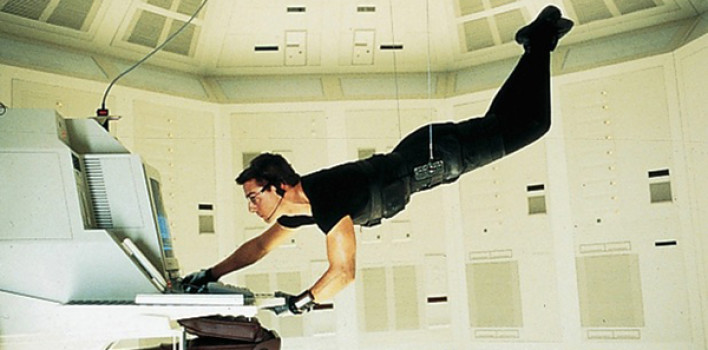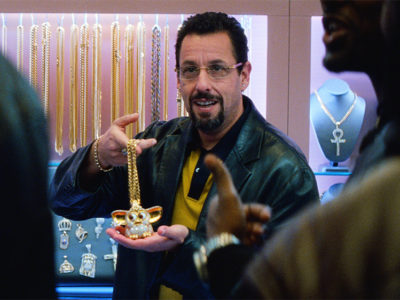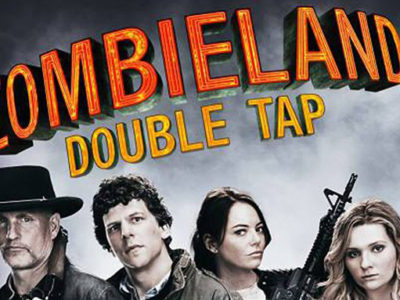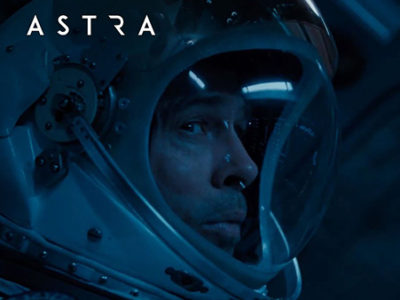Review| Mission Impossible
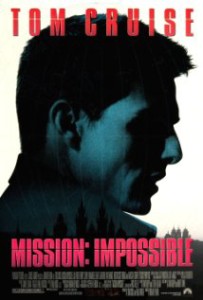 The Mission: Impossible film franchise, with each sequel each promising bigger and more dangerous stunts for its star, Tom Cruise, to attempt, began less with a loud bang and more with a slow burn. Brian De Palma’s 1996 film is more of a spy thriller than a straightforward action film. Through mind-bending plot twists and some interesting cinematography and directorial decisions, De Palma takes the audience along for a thrill ride with Ethan Hunt (Cruise) as a young IMF agent trying to discover whodunit.
The Mission: Impossible film franchise, with each sequel each promising bigger and more dangerous stunts for its star, Tom Cruise, to attempt, began less with a loud bang and more with a slow burn. Brian De Palma’s 1996 film is more of a spy thriller than a straightforward action film. Through mind-bending plot twists and some interesting cinematography and directorial decisions, De Palma takes the audience along for a thrill ride with Ethan Hunt (Cruise) as a young IMF agent trying to discover whodunit.
The opening sequence features the now-iconic scene of Ethan pulling off the mask to reveal the truth. This mask-removal trope—present in each of the sequels—serves as a sort of symbol of the entire franchise, a multi-layered mosaic of identity and styles, with each director giving the next film their own personal thumbprint. The audience is unsure where the film will be headed next, or what sort of identity this particular Mission: Impossible film holds. De Palma’s style is certainly present, with canted angle shots, split focus shots, and slow tracking shots all making for a very stylized action thriller. Some taut sequences–especially the Langley infiltration and the fish tank restaurant scene–are exhilarating, and Mission: Impossible is certainly never dull.
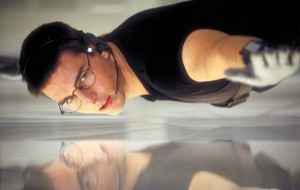 When the IMF team’s mission in Prague falls apart, leaving Ethan on the run and trying to pick up the pieces of the puzzle, it feels like a bold choice for so early on in the film. A stellar supporting cast with the likes of Kristin Scott Thomas and Emilio Estevez are killed off rather quickly and brutally, leaving the audience wondering who is truly alive or dead, and where this film is really headed. The first time I saw Mission: Impossible, I’m quite sure I didn’t know what was going on—the plot became so convoluted and confusing at times, I couldn’t keep up. The mask trope comes into play here—it’s difficult to tell the various identities and motivations of the primary characters, and the plot changes their tone from scene to scene. Ethan is capable and confident in one moment, scared and unnerved in the next; he is witty and charming, romantic, intellectual, brooding, a people person, a loner, etc. It’s hard to tell if he’s in control of a situation or simply going along for the ride. He’s a cipher, enigmatic and only serving as the carrier for the audience’s own queries and intrigue.
When the IMF team’s mission in Prague falls apart, leaving Ethan on the run and trying to pick up the pieces of the puzzle, it feels like a bold choice for so early on in the film. A stellar supporting cast with the likes of Kristin Scott Thomas and Emilio Estevez are killed off rather quickly and brutally, leaving the audience wondering who is truly alive or dead, and where this film is really headed. The first time I saw Mission: Impossible, I’m quite sure I didn’t know what was going on—the plot became so convoluted and confusing at times, I couldn’t keep up. The mask trope comes into play here—it’s difficult to tell the various identities and motivations of the primary characters, and the plot changes their tone from scene to scene. Ethan is capable and confident in one moment, scared and unnerved in the next; he is witty and charming, romantic, intellectual, brooding, a people person, a loner, etc. It’s hard to tell if he’s in control of a situation or simply going along for the ride. He’s a cipher, enigmatic and only serving as the carrier for the audience’s own queries and intrigue.
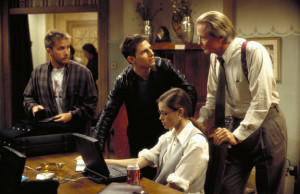 Overall, Mission: Impossible is much more engaging and original than many other similar ’90s action thrillers. My only qualms are its overly-convoluted plot (which is, paradoxically, overly simple once the final villain is revealed) and its heavy use of technology for its narrative. Utilizing “the latest technology” sure ends up making any film feel quickly antiquated. That super-new laptop or cell phone or hidden video camera? Definitely obsolete and in a landfill somewhere by now. Ethan spends a long sequence sending emails, a scene that may have felt fresh in 1996, but doesn’t age well in our era of WiFi and text messaging. Still, Mission: Impossible, while not the best of its own franchise, certainly set a solid foundation with its twists and thrills. It was the first of these films to take off the mask, so to speak, revealing a new spy thriller series that would take on divergent identities in the films to come.
Overall, Mission: Impossible is much more engaging and original than many other similar ’90s action thrillers. My only qualms are its overly-convoluted plot (which is, paradoxically, overly simple once the final villain is revealed) and its heavy use of technology for its narrative. Utilizing “the latest technology” sure ends up making any film feel quickly antiquated. That super-new laptop or cell phone or hidden video camera? Definitely obsolete and in a landfill somewhere by now. Ethan spends a long sequence sending emails, a scene that may have felt fresh in 1996, but doesn’t age well in our era of WiFi and text messaging. Still, Mission: Impossible, while not the best of its own franchise, certainly set a solid foundation with its twists and thrills. It was the first of these films to take off the mask, so to speak, revealing a new spy thriller series that would take on divergent identities in the films to come.


